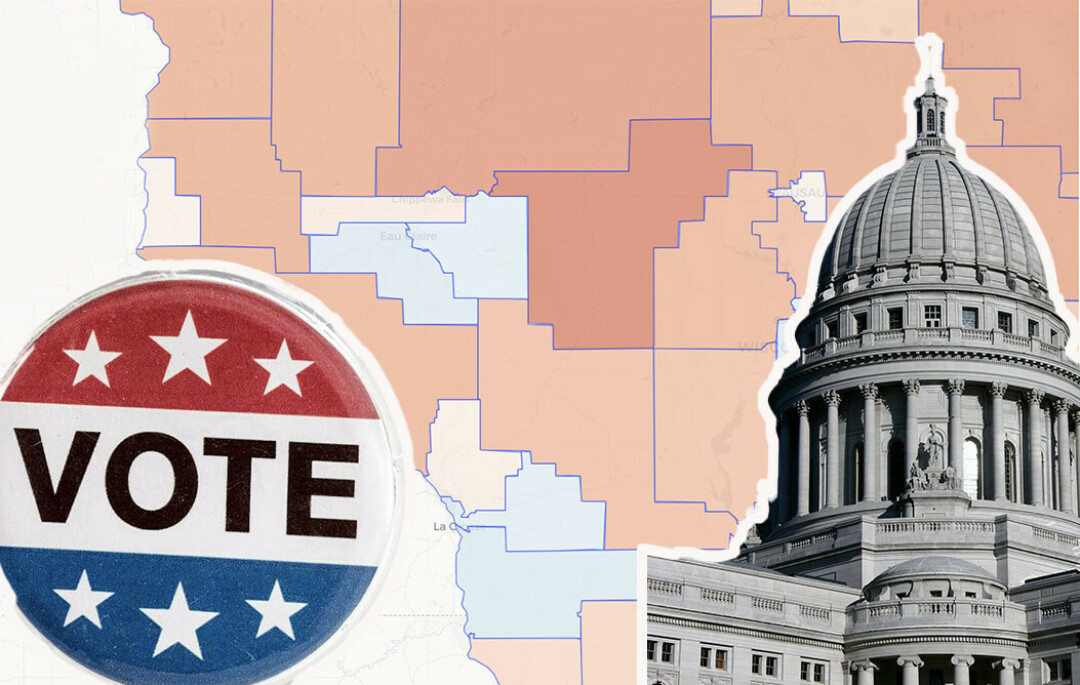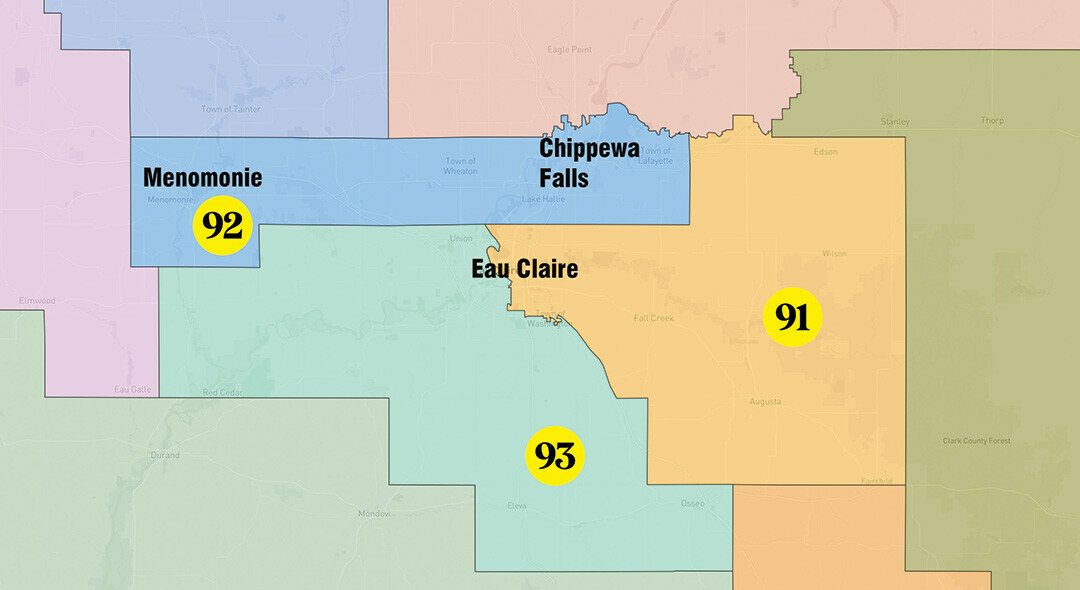
In mid-February, the Wisconsin State Legislature passed new state Assembly and Senate district maps submitted by Gov. Tony Evers as part of the Wisconsin Supreme Court’s ruling on the constitutionality of the maps adopted in 2022. This will likely lead to near-equal chances that the Republican or Democratic parties could gain control of legislative majorities. Similar changes may be seen as part of our future Chippewa Valley-area elections.
Instead of the current strongly Democratic Assembly district covering most of Eau Claire (the 91st) surrounded by several likely Republican rural districts, the new map introduces three swing districts in the Eau Claire metropolitan area. In a 50-50 statewide election, the two main parties are expected to have around or under a 5% advantage in the new 91st, 92nd, and 93rd districts. In a wave election year, all three seats could be won by one party.
From the 1980s through the 2000s, the north and south sides of Eau Claire were divided into two Assembly districts; beginning with the 2012 election, the 91st district encompassed most of the municipality. Under the new maps, the city is split in an east-west manner. The border between the new 91st and 93rd districts runs from the county line down the Chippewa River to Lake Street, over to Harding Avenue, and then mostly along Rudolph and Golf Roads to Highway 93 and Interstate 94.
To calculate expected partisan advantage, the two-way Republican-Democratic 2020 presidential vote in precincts within the new boundaries is used. For example, a D+10 district should give a generic Democratic candidate 10% more of the vote than a Democrat in a statewide election.

The 91st (expected partisan advantage: D+3) covers eastern Eau Claire, and now takes in Fall Creek, Augusta, Cadott, and Fairchild. Democrat Jodi Emerson is the incumbent; she lives within the new district lines, as does Republican Karen Hurd, who presently represents the now-moved 68th district. (On March 4, Hurd announced she was moving to Clark County and will run for the 69th district seat.)
The 93rd (D+4) moved south and west of the Eau Claire city limits in 2012; it now covers the city’s western half, as well as Osseo, Strum, Eleva, and Rock Falls. Republican Warren Petryk has represented the 93rd since the 2010 election.
The 92nd (R+3) changes from a Buffalo/Trempealeau County-based district to one connecting Chippewa Falls, Lake Hallie, Elk Mound, and Menomonie. Republican Clint Moses is currently the 29th district representative; he now resides in the 92nd.
Switching geography with the 92nd is the 29th (R+12), now covering Mondovi, Independence, and other places down to the Mississippi River. First elected in 2016 in the 92nd district, Republican Treig Pronschinske lives in the newly configured 29th.
New State Senate maps will not fully affect our representation for a few years, as the 23rd and 31st districts are not on the ballot until 2026.
Other locally notable districts include the new 67th (R+14) going from Colfax to Rice Lake; the 68th (R+18) stretching from Jim Falls and Bloomer to Park Falls and Ladysmith; and the 69th (R+21) including Stanley, Thorp, Neillsville, and Medford.
New State Senate maps will not fully affect our representation for a few years, as the 23rd and 31st districts are not on the ballot until 2026. The 10th State Senate district (R+9) will be part of this autumn’s election; it includes the new 29th Assembly district, plus two others going north to Hudson and New Richmond.
As before, the 23rd State Senate district (R+17) contains the 67th, 68th, and 69th Assembly districts. The new version of the 31st district – involving the Assembly’s 91st, 92nd, and 93rd – moves north to essentially cover the Eau Claire metro area. It was one of the very few statewide swing districts under the old boundaries, at R+1; now at D+1, it remains that way. Its 2026 election could feature a match of area state senators, as both incumbent Democrat Jeff Smith and Republican Jesse James from the current 23rd live in territory within the new 31st.
Ultimately, change is more likely for the remainder of this decade regarding our Madison representatives. Yet, as always, every vote matters.
Learn more about Wisconsin’s redistricting saga and compare the new and old legislative maps at www.wispolitics.com/2024-redistricting.



















